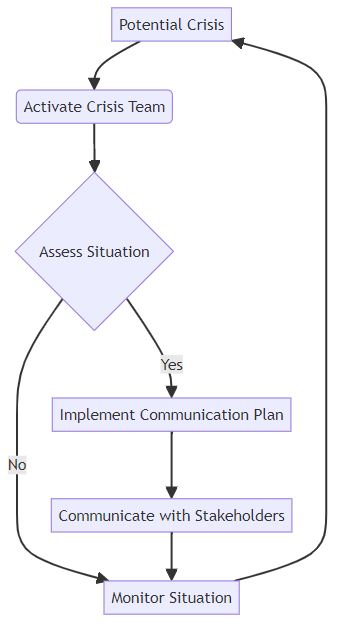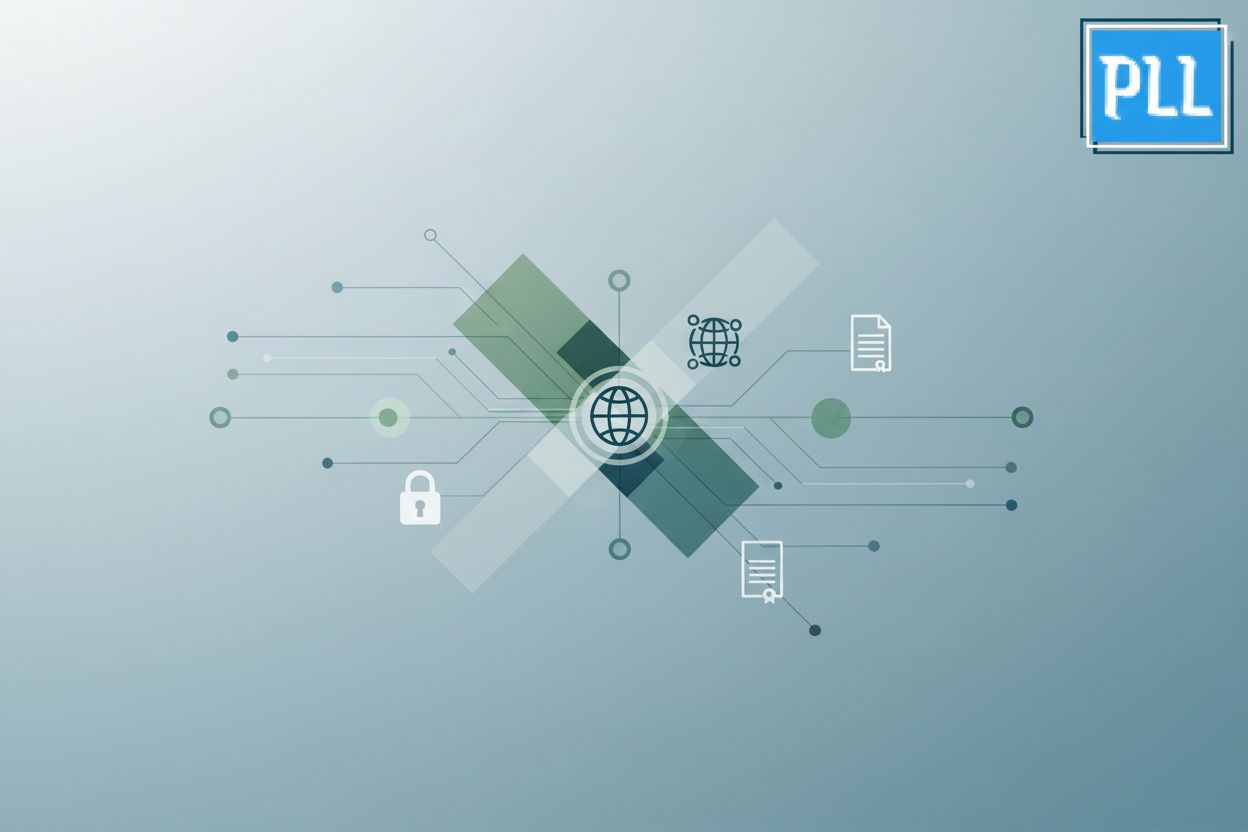Digital PR Crisis Management for SEO: Protecting Your Backlinks and Brand Authority
Understanding the Intertwined Nature of Digital PR, SEO, and Brand Reputation
Is your brand's online reputation an asset or a liability? The convergence of Digital PR, SEO, and brand reputation forms a powerful force that can either propel your business forward or leave it struggling in the search rankings.
High-quality backlinks from reputable sources serve as votes of confidence for your website, significantly boosting domain authority. For example, a tech startup featured on a major industry news site gains credibility and valuable backlinks.
Positive brand mentions, even without direct links, can improve search rankings. Search engines recognize these mentions as indicators of relevance and authority. (Brand Mention for SEO and Its Importance - SmartClick)
Conversely, negative publicity can lead to a decline in organic traffic. A public relations crisis can damage your brand's online presence, resulting in lower search visibility.
A strong brand reputation fosters trust and encourages link building. When customers trust your brand, other websites are more likely to link to your content.
Negative reviews and press coverage can damage your online presence, making it harder to attract and retain customers.
Search engines consider user sentiment when ranking websites. A business with overwhelmingly negative reviews may struggle to rank well, regardless of its SEO efforts. Search engines might infer user sentiment by looking at things like how often people click on your site from search results (click-through rates), how long they stay on your site (dwell time), if they immediately bounce back to the search page (bounce rates), and, of course, the general vibe of reviews and mentions across the web.
Understanding these connections is the first step in protecting your brand. Next, we'll dive into the crucial elements of a digital PR crisis management plan.
Identifying Potential Digital PR Crises That Can Hurt Your SEO
A single online crisis can undo years of hard work building your brand and SEO. Are you prepared to identify and address potential threats before they impact your search rankings and brand authority?
Many events can trigger a digital PR crisis that hurts your SEO. Being aware of these potential pitfalls is the first step in protecting your brand.
- Product recalls or defects can quickly escalate if not handled transparently. For example, a faulty component in a consumer electronics product can lead to widespread negative reviews and a loss of customer trust.
- Data breaches and security vulnerabilities are particularly damaging, especially for SaaS companies. Customers expect their data to be safe, and a breach can lead to a loss of backlinks from security-focused websites and a drop in search rankings.
- Controversial statements by company leaders can spark outrage and damage your brand's reputation. Even seemingly minor missteps can be amplified on social media, leading to a decline in organic traffic.
- Customer service failures going viral can create a perception of poor service quality. A single mishandled complaint can spread rapidly, impacting your ability to attract new customers and earn valuable backlinks.
- Fake news or misinformation campaigns can deliberately target your brand to damage its reputation. These campaigns can spread quickly online, making it difficult to control the narrative and protect your SEO.
Early detection is critical to managing digital PR crises effectively. Several tools can help you monitor your online presence and identify potential problems before they escalate.
- Social media listening tools such as Brand24 and Mention help track brand mentions across various platforms. These tools allow you to identify negative sentiment and respond quickly to emerging issues. They do this by analyzing keywords, looking for negative emojis, and flagging sudden spikes in conversations about your brand. This helps you catch things like a sudden surge in complaints about a specific product feature or a viral negative customer experience before it blows up.
- Google Alerts is a free tool for monitoring news coverage related to your brand. Setting up alerts for your company name, products, and key personnel can help you stay informed about potential crises.
- Sentiment analysis tools gauge public opinion by analyzing text data from social media, reviews, and news articles. These tools can help you understand how people feel about your brand and identify potential areas of concern.
- Monitoring review sites like Trustpilot and G2 is essential for identifying negative feedback and addressing customer concerns. Responding to reviews promptly can demonstrate your commitment to customer satisfaction and mitigate potential damage.
By proactively monitoring these channels, you can identify and address potential crises before they significantly impact your SEO and brand authority. Next, we'll explore how to develop a comprehensive crisis communication plan to safeguard your online reputation.
Developing a Proactive Digital PR Crisis Management Plan
Imagine your brand's online reputation is a ship, and a PR crisis is an iceberg; a proactive plan is your navigation system to steer clear of disaster. Developing a robust crisis management plan is not merely a precaution; it's a necessity for safeguarding your SEO and brand authority.
The first step is assembling a dedicated crisis communication team. This team should include key personnel from various departments:
- Public relations professionals to manage media inquiries and craft official statements.
- Marketing experts to monitor social media and adjust messaging as needed.
- Legal counsel to advise on potential liabilities and ensure compliance.
- Customer service representatives to address customer concerns and feedback.
Clearly defined roles and responsibilities within the team ensure a coordinated and efficient response. Designating a single spokesperson for all media inquiries helps maintain a consistent message and prevents conflicting information from being released.
Having pre-approved messaging ready to go can save valuable time when a crisis hits.
- Develop holding statements for various potential crisis scenarios, such as product recalls, data breaches, or controversial statements. These are like pre-written placeholders that acknowledge the situation and promise more information soon.
- Prepare FAQs to address common concerns and questions that may arise from the public or media.
- Create template social media posts for different scenarios, like a quick update on a service outage or a statement of apology.
- Draft internal communication templates to keep your employees informed and aligned during a crisis.
- Have template press releases ready to go, which can be quickly adapted with specific details.
Ensure all messaging aligns with your brand values and tone, demonstrating empathy and transparency. By preparing these materials in advance, you can respond quickly and confidently, minimizing the potential damage to your brand's reputation.
Establishing clear communication channels and protocols is essential for disseminating information effectively during a crisis.
- Determine the best channels for communicating with stakeholders, such as social media, email, press releases, or a dedicated crisis website.
- Establish a clear escalation process to ensure that critical issues are promptly addressed by the appropriate personnel.
- Ensure timely and consistent communication to keep stakeholders informed and prevent the spread of misinformation.

A well-defined communication plan ensures that everyone knows their role and how to respond, leading to a more controlled and effective crisis management process.
With a crisis communication plan in place, you'll be better prepared to manage the situation. Next, we'll look at how to effectively respond to negative press and online reviews.
Responding Effectively to a Digital PR Crisis: SEO-Focused Strategies
Is your brand facing a barrage of negative attention online? Responding quickly and strategically is crucial to protect your SEO and overall brand health. Here's how to turn the tide during a digital PR crisis.
The first step is to identify and prioritize negative search results. Focus on the pages that appear highest in search engine results for your brand name and related keywords.
- Look beyond the first page of results, but concentrate your initial efforts on the most visible and damaging content.
- For example, a negative review on a prominent site like Yelp can have a significant impact, especially for local businesses.
- Similarly, a critical article in a major industry publication can quickly damage your reputation in the B2B world.
Next, create and optimize positive content to outrank negative content. This means producing high-quality, informative, and engaging materials that showcase your brand in a positive light.
- Publish blog posts, articles, and press releases that address the issues raised in the negative content.
- Optimize this content with relevant keywords to improve its search engine ranking.
- For instance, a SaaS company dealing with negative reviews about a recent software update could publish a series of blog posts highlighting the improvements and addressing user concerns.
Finally, utilize SEO techniques to push down negative search results. This can involve a combination of on-page and off-page optimization strategies.
- Build high-quality backlinks to your positive content to increase its authority and visibility. The more authoritative sites that link to your positive content, the more likely search engines are to see it as a trustworthy and relevant source, naturally pushing it higher in search results and thus pushing down less authoritative or negative content.
- Encourage positive reviews and testimonials from satisfied customers to improve your online reputation. Positive reviews can boost local SEO rankings and make your business appear more favorable in search results, again helping to push down less favorable listings.
- Use social media to promote your positive content and engage with your audience. A strong social media presence with positive engagement can signal to search engines that your brand is active and well-regarded, indirectly influencing rankings.
A digital PR crisis can also impact your backlink profile, potentially harming your SEO. It's essential to monitor your backlink profile for toxic links resulting from negative press.
- Negative articles or blog posts may contain links to your website, which can negatively affect your search rankings if the linking sites have low domain authority or are considered spammy.
- Use tools like Ahrefs or Semrush to identify potentially harmful backlinks.
It's important to disavow low-quality or spammy backlinks pointing to crisis-related content. This tells Google that you don't want these links to be considered when evaluating your website's authority. Disavowing is important because Google might penalize your site if it's associated with a lot of low-quality or spammy links, even if you didn't create them. Examples of toxic or spammy links include links from irrelevant websites, paid links that aren't disclosed, or links from massive networks of sites designed solely for link building (link farms).
- Create a disavow file in Google Search Console to remove the impact of these links.
- Regularly review your backlink profile and update your disavow file as needed.
Simultaneously, focus on acquiring new, high-quality backlinks to reinforce your domain authority.
- Reach out to reputable websites and publications in your industry to earn backlinks through guest posting or content partnerships.
- Create valuable and shareable content that naturally attracts backlinks.
- For example, a financial services company could create an infographic explaining complex financial concepts, which other websites may link to as a helpful resource.
Content marketing is a powerful tool for controlling the narrative during a digital PR crisis. Create informative and transparent content to address concerns.
- Be honest and upfront about the issues, and explain the steps you're taking to resolve them.
- Avoid making excuses or downplaying the severity of the situation.
Publish blog posts, articles, and videos to provide context and correct misinformation.
- Use these channels to share your side of the story and address any false or misleading information that is circulating online.
- For example, a retail company facing accusations of unethical labor practices could publish a video showcasing its commitment to fair wages and safe working conditions.
Engage with influencers and industry experts to amplify your message.
- Partner with trusted voices in your industry to share your content and address concerns.
- This can help to build credibility and reach a wider audience.
By taking these steps, you can effectively respond to a digital PR crisis and protect your SEO. Next, we'll explore how to use social media to manage your online reputation during a crisis.
Post-Crisis Recovery: Rebuilding Brand Authority and SEO Performance
The dust has settled after a digital PR crisis, but the road to recovery requires more than just a sigh of relief. It's time to actively rebuild your brand authority and SEO performance, ensuring long-term resilience against future storms.
Start with a thorough SEO audit to pinpoint technical issues and content gaps exposed by the crisis.
- This involves checking for broken links, slow loading speeds, and other technical problems that can harm your search rankings.
- For example, a retailer might discover that its product pages are not mobile-friendly, leading to a poor user experience and lower search visibility.
- Fixing these issues improves user experience and signals to search engines that your site is trustworthy and valuable.
- Content gaps exposed by a crisis might include a lack of clear information on a specific company policy that was questioned, insufficient FAQs about a product issue that caused the crisis, or an absence of positive testimonials to counter negative reviews. You can identify these by looking at what questions people are asking online that you don't have answers for, or what negative points are being made that you don't have positive counter-content to address.
It's also crucial to analyze social media sentiment to understand how the public perceives your brand after the crisis.
- Tools like Brand24 can help you track mentions, analyze sentiment, and identify key influencers who are discussing your brand.
- A financial services company could use sentiment analysis to gauge public trust in its services after a data breach, informing its communication strategy.
Finally, review your customer service processes to prevent similar issues from arising again.
- Identify weaknesses in your support channels, response times, and complaint resolution procedures.
- A SaaS company might find that its customer support team was ill-equipped to handle the surge of inquiries during a service outage, prompting investments in training and resources.
Acknowledge past mistakes and demonstrate a genuine commitment to improvement. Transparency can go a long way in rebuilding trust.
- Issue a sincere apology, outlining the steps you're taking to rectify the situation and prevent future occurrences.
- For example, a healthcare provider that experienced a data breach should proactively communicate with affected patients, offering credit monitoring services and detailing the security measures implemented to prevent future breaches.
- A company might publish a blog post detailing the new safety protocols implemented after a product issue, including interviews with the engineers responsible for the changes, to show they're taking concrete steps.
Actively solicit feedback from customers and stakeholders to understand their concerns and expectations.
- Conduct surveys, host focus groups, and engage in open dialogue on social media to gather valuable insights.
- A restaurant chain facing criticism for poor food quality could launch a customer feedback program, offering incentives for honest reviews and using the data to refine its menu and service.
- In a post-crisis scenario, feedback on the resolution process, suggestions for future improvements, and sentiment regarding the apology are particularly crucial. Analyzing this feedback involves looking for recurring themes and prioritizing actionable suggestions.
Implement changes based on feedback and communicate them transparently to show that you're listening and responding to concerns.
- Share updates on your progress through blog posts, social media updates, and email newsletters.
- A consumer goods company that received complaints about its packaging could redesign its products using more sustainable materials, highlighting these efforts in its marketing campaigns.
Continue building high-quality backlinks from reputable sources to reinforce your domain authority.
- Focus on earning links from websites with high domain authority and relevance to your industry.
- A tech startup could pursue guest posting opportunities on leading tech blogs and industry publications, showcasing its expertise and earning valuable backlinks.
Focus on creating valuable and engaging content that attracts links naturally.
- Develop in-depth guides, original research, and interactive tools that provide unique value to your audience.
- A marketing agency could create a comprehensive guide to SEO best practices, attracting backlinks from websites seeking to improve their search rankings.
Monitor your backlink profile regularly for any potential issues, such as toxic links or sudden drops in link quality.
- Use tools like Ahrefs or Semrush to identify and disavow harmful backlinks that could negatively impact your search rankings.
By taking these steps, you can rebuild your brand authority and SEO performance after a digital PR crisis, ensuring long-term resilience against future challenges.
How ProductLaunchList.com Can Help Startups Manage Backlinks During a PR Crisis
Is your startup facing a PR crisis that's threatening your hard-earned backlinks? ProductLaunchList.com can be your SEO shield, offering expert services to protect and rebuild your online authority.
ProductLaunchList.com provides professional backlink management. This ensures your website's authority remains strong. During a PR crisis, their professional backlink management can help protect your domain from the negative impacts of bad press by actively monitoring and disavowing toxic links that might arise from negative articles.
Their team helps identify and disavow toxic links, shielding your domain from negative SEO impacts.
Leverage guest post outreach to secure positive mentions. You'll also get high-quality backlinks from authoritative websites.
This counteracts negative press and rebuilds your brand’s online reputation.
Their personalized link management services are tailored to your startup's specific needs, meaning they can focus on acquiring links that directly support your recovery efforts and help push down negative content in search results.
ProductLaunchList.com offers personalized link management services. These services are tailored to your startup's specific needs.
From link acquisition to performance tracking, they ensure your SEO strategy remains effective during challenging times.
With expert backlink management and personalized services, ProductLaunchList.com helps startups navigate PR crises.
Case Studies: Real-World Examples of Digital PR Crisis Management and SEO
What separates triumph from disaster in a digital PR crisis? Examining real-world scenarios offers invaluable lessons for protecting your brand and SEO.
Johnson & Johnson (Tylenol Crisis): Their swift recall and transparent communication set a gold standard for crisis management. This decisive action, coupled with clear messaging, likely helped maintain customer trust and prevent long-term damage to their brand authority and search rankings. By quickly addressing the issue, they minimized negative sentiment and the creation of lasting negative backlinks.
Toyota (Sudden Acceleration Issues): They focused on rigorous testing and open communication to reassure customers. While initially facing significant backlash, their commitment to transparency and addressing the root cause likely helped them rebuild trust and recover their search visibility over time. Their efforts to communicate solutions and safety improvements would have generated positive content that could outrank earlier negative reports.
TEPCO (Fukushima Disaster): Their handling of the Fukushima disaster shows the consequences of poor communication. Their lack of transparency amplified public distrust and likely led to a sustained negative perception, impacting their brand authority and search visibility for years. The inability to control the narrative resulted in a flood of negative, authoritative content that was hard to overcome.
BP (Deepwater Horizon Oil Spill): This illustrates how mishandling a crisis damages reputation. Downplaying the severity hurt their brand and SEO. The prolonged environmental damage and public outcry led to a massive influx of negative press and backlinks from environmental groups and news outlets, severely impacting their online reputation and search performance for an extended period.
By studying these cases, you can better prepare for and navigate your own digital PR challenges.





